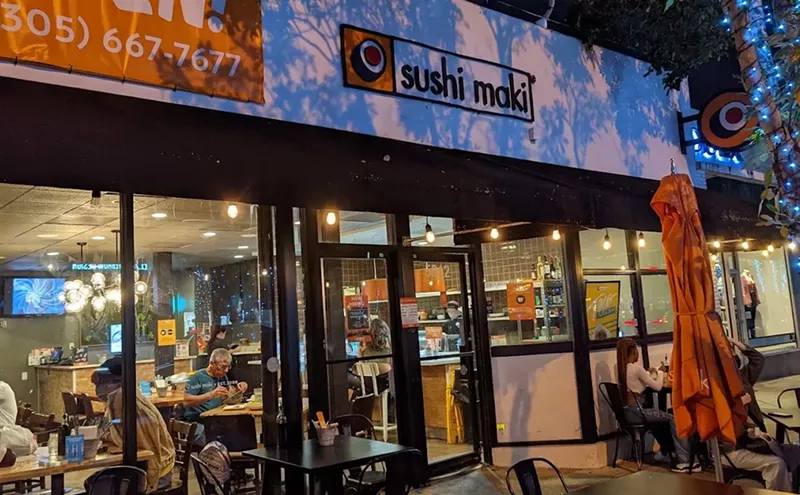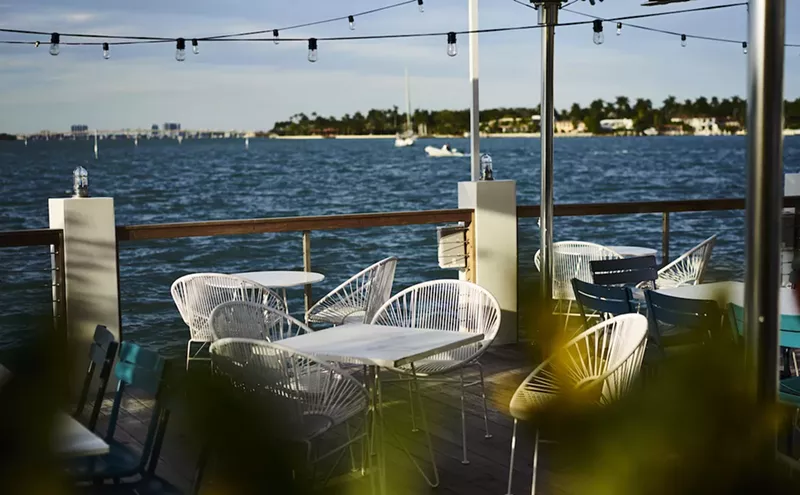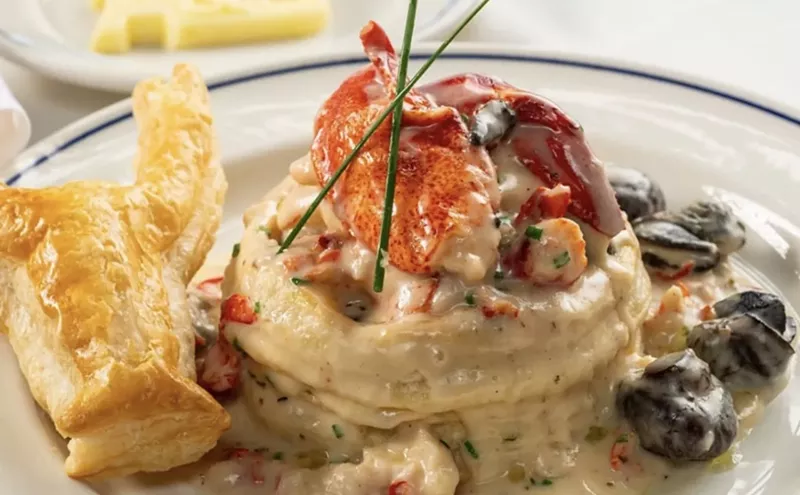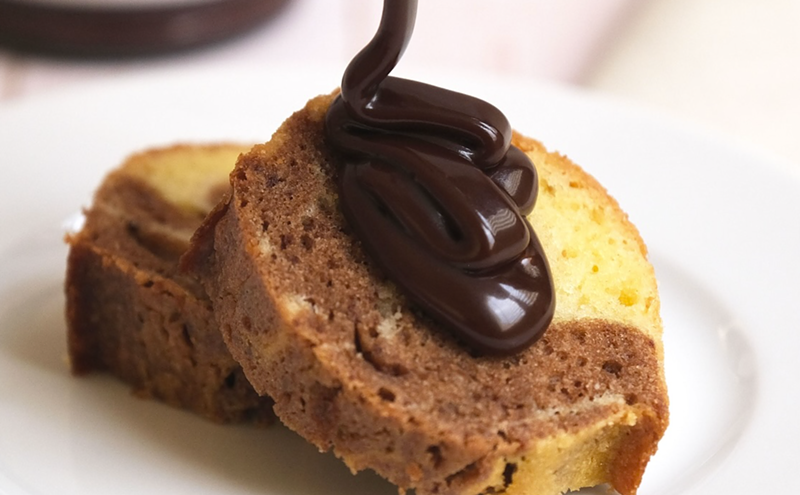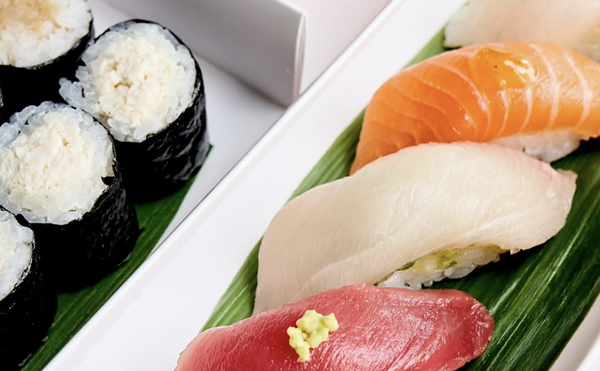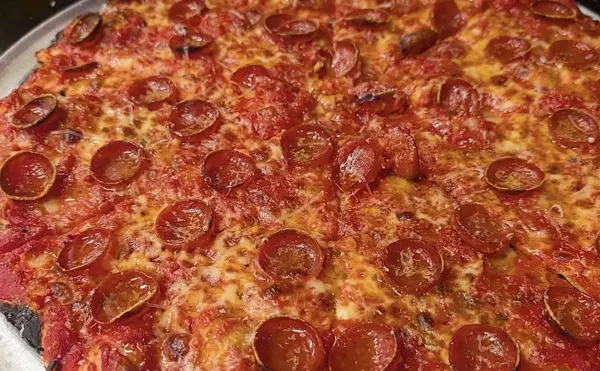What do a Russian kebabery, a student-run restaurant, and a Oaxacan taqueria on wheels have in common? Nothing except delicious food, which speaks a universal language. Lula Kebab House owners Sofia and David Shifrin are from Minsk (now the Republic of Belarus). Francisco Perez and his brother-in-law Moises, proprietors of Orale Taqueria Mexicana, hail from the town of La Reforma (about 10 hours from Oaxaca). The students who cooked our meals at the FIU School of Hospitality and Tourism Management come from all over the world. These three establishments bear witness to the notion that a superb meal can be found anywhere, in any setting.
Orale Taqueria Mexicana is a truck that's been converted into a traveling kitchen, topped by a red, white, and green-striped cabin. For the past three years, it has developed a devoted following of folks who flock to its locale on the SW 28th Street side of Douglas Park every Saturday and Sunday. The menu offers tacos, tacos, and more tacos in their simplest, most authentic form: corn tortillas folded over meat. Moises tosses the tortillas onto a griddle and then tops them with any of a number of savory fillings. Some of the best include juicy barbecue lamb (barbacoa), slowly roasted pork (carnitas de cerdo), pork grilled with pineapple (al pastor), spicy chorizo sausage, and morsels of dark chicken smoky from the grill and imbued with well-marinated flavors. Grilled beef (carne asada), on the dry side, was the only letdown.
Orale also showcases popular Mexican parts of beef that are less familiar in the States, like lengua (tongue), suadereo (the fatty, riblike beef belly), and cachete (cheek meat, currently a cut with cachet in fine-dining places). Tacos are slender, so you can eat a bunch of them (they are just $2.50 apiece). The only other option is a chicken-and-cheese quesadilla, two or three times larger than a taco and served with sour cream, pico de gallo, and guacamole ($4).
Once Moises is finished assembling the tacos — which he does at warp speed — Francisco neatly wraps them in sandwich paper and aluminum foil and then passes the little silver envelopes (which are light enough you could mail one using a regular postage stamp) to customers. A tray of traditional toppings includes the essential chopped onion and cilantro, pico de gallo, thin radish slices, and small lime wedges. No lettuce and tomato are on hand because Orale ain't Taco Bell. If you're not convinced this is the real deal, try one of the three salsas in squeeze bottles — hot, hotter, and ay Chihuahua! Plus there's a jar of whole jalapeños for patrons without tear ducts.
The main Orale truck is hooked to a trailer where Enriqueta pours homemade horchata (a refreshing rice, almond, and cinnamon beverage) or plucks bottles of jarritos (Mexican sodas) from a cooler. She also collects the money for your meal. Cash only, and very well spent.
Lula are grilled Kazakh kebabs made from minced, seasoned lamb, customarily served over a bed of thinly sliced onions dusted with sumac. That's just how they're done at Lula Kebab House, which the Shifrins opened in Sunny Isles in June 2006 (they moved here eight years ago, but between Minsk and Miami, they spent a few decades in Kyrgyzstan and Brooklyn). David orchestrates the front of the house, while Sofia tends to the kitchen. Although she's an accomplished cook, her Armenian chef and Russian crew prepare most of the food.
The lamb lula was delectable. A piquant, garlic-spiked red pepper dip of chutney consistency came alongside it, with choice of basmati rice, tabbouleh, or mashed or roasted potatoes. Lula skewers beef and chicken as well. The same meats come whole as shish kebabs, as do sturgeon and salmon, the last lathered in terrific tart/sweet pomegranate molasses.
But this kebab house serves much more than kebabs. There are soups such as borscht, ethereal pelmeni dumplings in chicken broth, beef Stroganoff, Georgian lamb stew, pickled herring, tomato stuffed with beef tongue salad, and sweet blini sumptuously filled with farmers cheese, cream cheese, and cherries. Portions are hefty, prices more than fair — soups $5 to $7, appetizers $5 to $15, kebabs other than sturgeon $9 to $16. Do as the Russian émigré clientele do and have one of the amiable waiters slap a frozen bottle of vodka and some shot glasses on the table. It's like being back in the U.S.S.R., even for those who've never been.
The word is out about FIU's once-a-week lunch at the Biscayne Bay Campus in North Miami — as well it should be, because this special offer has been open to the public since Chef-Instructor Michael Moran initiated it 17 years ago. Every one of the 65 chairs gets occupied for the single seating, which occurs at noon on a rotating basis: Tuesday one week, Thursday the next. Guess it's not surprising that locals would take advantage of a deal that brings an upscale three-course meal, with beverage and espresso, for $15 (tax included, no tipping allowed).
The lunch is planned, prepared, and served by students as part of a restaurant training session for their course in Advanced Food Production Management. Such dining experiences tend to be unpredictable, since they are dependent upon the talent level of the class cooking on the day you eat, but Chef Moran keeps an eye on things to ensure consistency (he also oversees the massive food production for the South Beach Wine & Food Festival each year).
There is nothing consistent about the menu, which varies week to week. The style of cuisine gets shuffled as well, and I consider it a lucky draw that we ended up with a "Taste of France" theme (when calling in advance to reserve, you can ask what genre of food will be available). Tables were formally set, and in the center of each sat a wooden artist's palette aesthetically garnished with Brie and cheddar, crackers, green grapes, and a carved apple swan. It was a nice touch, even if such a course is more viable, digestively speaking, at meal's end. Fresh, homemade French bread with softly whipped butter is a real treat any time (one of the ovens in the sprawling, well-equipped kitchen is capable of baking specialty loaves from all over the world). Beverage options are sparkling water, iced tea, and red or white wine.
An appetizer of shrimp bisque was shockingly, fine-French-dining-establishment excellent. It boasted an impeccably smooth texture and beautifully balanced flavors of shellfish, brandy, and cream — with a piquant peck of cayenne. Even a plump shrimp poking up from the center of the bowl was perfectly cooked. My companion had asked for a substitute starter and was served a plate of braised fennel and red pepper — also done just right.
Diners are offered one of two entrées, and on this particular day, there was no wrong choice. Braised short ribs of beef, bookended by mashed potatoes and onion strings, melted into fulsome, meaty flavor — so satisfying one could overlook accompanying gravy that was a tad too salty, and an overcooked broccoli stir-fry the color of army fatigues. Fillet of sole en papillote was pretty much faultless, the fish steamy-fresh and topped with julienned vegetables; asparagus and saffron rice on the side were executed with aplomb. Velvety chocolate crème brûlée, deep with quality-cocoa taste, was capped by a diaphanous sheath of caramelized sugar and wispy dollop of whipped cream. A cup of espresso sealed the meal.
Being a former culinary student, I remember what it was like getting thrust into a dining room to wait tables without any experience. Thus the only criticism I am willing to render in this regard is that service was a little less than polished. Overall, though, this particular class put out cuisine that compares favorably to that found in most of our local restaurants. At meal's end, the 28-person crew marched from the kitchen, two at a time, pausing to announce their names and home countries: China, Haiti, Venezuela, Colombia, Panama, the Dominican Republic, and the U.S. of A. Let's hope they all settle in Miami and share their uniquely indigenous foods with us, whether it be proffered from strip mall restaurant or truck. We could sure use more Lulas and Orales.



